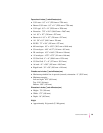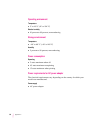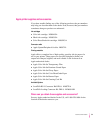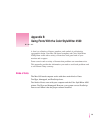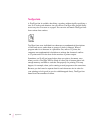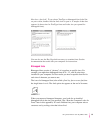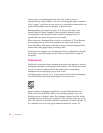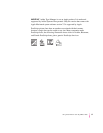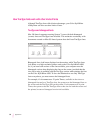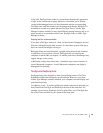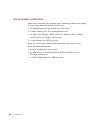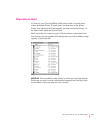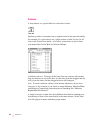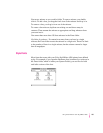
In most cases, scaled bitmapped fonts don’t look nearly as good as
preinstalled ones. Such scaling is one reason for the jagged edges (sometimes
called “jaggies”) you’ll see on your screen or in a printed document when you
request an uninstalled size (for example, 17-point Geneva).
Bitmapped fonts are designed on grids of 72 dots per inch (dpi)—the
standard Mac OS–based computer screen resolution. Because of their
correspondence to the standard screen resolution, bitmapped fonts in
preinstalled sizes always look great on your display.
When you print a bitmapped font, it prints at a resolution of 72 dpi. Because
most modern printers can print at resolutions far better than this (your
Color StyleWriter 4500 prints at 300 dpi or better), printed bitmapped fonts
almost always have jagged edges or stairstep sides.
Fortunately, the computer can use bitmapped fonts in combination with other
font formats, reserving bitmaps for the screen and other kinds of fonts for
the printer.
PostScript fonts
PostScript is a page-description language that defines the characters, symbols,
and images that appear on each page of a document. A PostScript font comes
as a pair of fonts: an outline font for the printer and a corresponding
bitmapped font for displaying type on your screen.
No bitmapped font, no menu entry: If your system doesn’t have the bitmapped
font, the PostScript font name won’t appear in your font menu.
Certain printers are designed specifically to work with PostScript fonts.
While your Color StyleWriter 4500 is not a PostScript printer, it can use
PostScript fonts if you have Adobe Type Manager software installed. Adobe
Type Manager uses printer fonts to generate clean-looking screen text at any
size. (This software is included with some installations of system software 7.5.
It is available from your local Apple-authorized dealer for version 7.1.)
96
Appendix B




